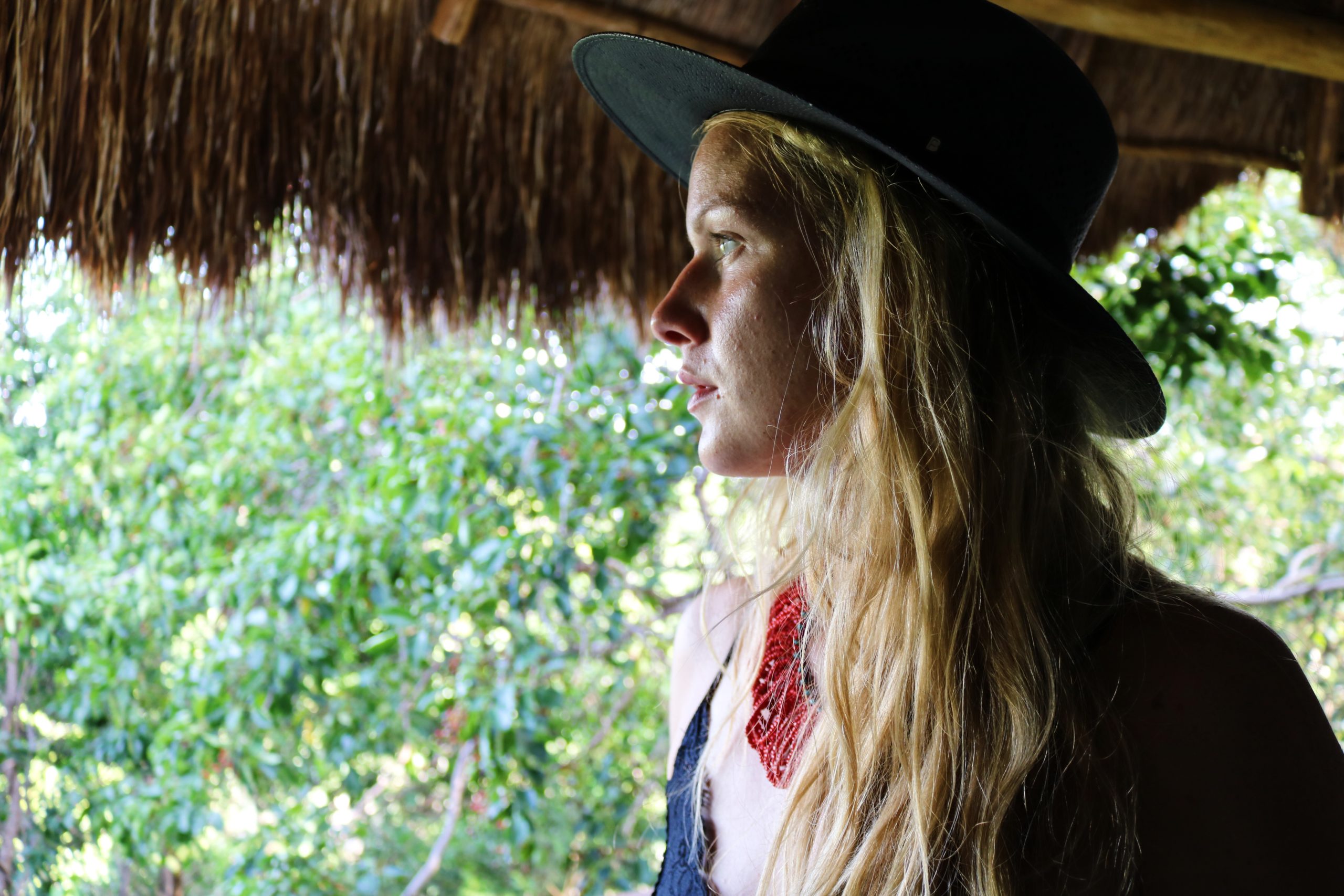picture: BhaktiCreative (CCO Public Domain)
Letting go of any emotions, thoughts, past events, behaviors, or even desires is a huge challenge for most people. While most of the advice out there on how to let go helps people to let go of the mental side of something, but often it’s not really helping them to let go of something emotionally. That’s why people still struggle with things even after working on letting go.
How to let go of something so that it is no longer bothering you, will be discussed in this article.
Side note: If you are just going to do one practice for the rest of your life, I encourage you to make the technique explained in this article a daily practice. The technique is so powerful, that it literally means the difference between living a happy and joyful life and having a painful life experience. We are not going to look into the theory of the technique, as this will be an article I will refer to all the time, rather we will focus on the process itself. Further articles that are using the same technique for specific issues:
The basic technique is from the book “Letting go- The pathway of Surrender” by David R. Hawkins and things are added from my experience. If you wish to go deeper, grab a copy of that book.
How to let go
Everything you struggle with is at the root of an emotional struggle. Even though some problems seem to be mental, they still have their roots in the emotional body. For example: overthinking seems to be a mental problem that actually stems from a feeling of insecurity or fear of the future. Another example is the fear of heights. It’s not the actual height you fear it’s the emotional issue of fearing the fall or fearing the loss of control. Because all of these struggles are so deeply rooted, you will never really succeed when you try to let go of something just on the mental level.
Thoughts are Messengers
Thoughts are messengers. They are messengers of your emotions. Thoughts reflect your current vibrational state of being which is caused by your emotions. So any thought you think is pointing you towards an emotion you feel. So any reoccurring thought you have is constantly pointing you towards an emotion you repress.
How to let go- The Technique
The Letting go technique is very simple. All you do is you bring all your focus and attention to the emotion you feel to which your thoughts pointed you in the first place. While you do that it is super important to set all judgments aside and to just be unconditionally present with the emotion. Furthermore, you have to focus on the emotion as long as the emotion wants you to. So don’t think about time or “when will this end” and just be with it. Because all the emotional needs are your unconditional non-judgmental presence. In order to better feel your emotions, you are going to use the body to tune in to the emotion. Because every emotion you feel has a sensation in the body such as “tension in my shoulders”, “a cold stream of energy in my back” or “a hot feeling in my forehead”, which you will then use as a focus point. To practice the technique, follow the steps below or purchase the guided letting go technique meditation.

Letting Go Technique Guided Mediation
Guided Letting Go Technique Meditation inspired by Letting Go: The Pathway of Surrender
Book by David R. Hawkins.
This letting go meditation help you to let go of any emotions, thoughts, past events, behaviors or even traumas.
Duration: 15 Minutes
With Music
spoken by Lorelle Dehnhard
- Take a comfortable position. Relax your body.
- Take a few deep breaths and use the exhale to relax your body even more.
- Now bring up something you wish to let go of. May it be a thought, event, behavior, desire or something else (literally anything works)
- Focus on that thing and immediately tune in to how you feel.
- Do you feel resistance immediately? What emotions come up? Can you give the emotions a name? Is it sadness, anger, resistance, frustration?
- Try to localize the emotion in the body (exp.: head, neck, arms, legs).
- Be very specific with the localization and try to describe the emotion using colors, temperatures, or even physical states such as (liquid, solid,..) (exp.: “a burning sensation around my eyes”, “a cold stream around my belly area”, “huge tension on my shoulders going all the way into my neck”)
- Now fully feel that sensation in your body and be totally present with it.
- Relax into it.
- Set all judgment aside. Don’t think about how long you should spend with that sensation. Just stay there as long as the emotion needs (this can take 1 minute, 5, or even 20 minutes, simply be unconditionally present).
- Stay there until you feel a sense of relief or a fading away.
- Usually, there are multiple levels to an emotion so the sensation you just felt may transform into a different sensation.
- If so, repeat that process.
- Repeat that process multiple times with every emotion that comes up.
- When the emotion is fully resolved and you feel a sense of peace in your whole being, you can slowly come back and open your eyes.
Traumas, beliefs, desires, emotions, and thoughts are highly complex. They are not just made of one emotion that you let go of and then you are free. Most of the time there are layers of emotions and different intensity levels. When you first tune in to something, you will most likely feel resistance coming up first which is covering the actual emotion. In that case, use the same process for the resistance first and then proceed to the next emotion coming up.
While doing the technique you will experience a lot of emotions with different intensity levels. I will warn you here that it can be very painful sometimes and the emotions usually get very very intense the minute you focus on them. Here, I encourage you to really keep going and allow the pain to come up and stay present with it. It usually gets very intense before it starts to fade away.
It’s not enough to work on one belief, trauma thought, or desire once. Often, you have to work on these things for a couple of days in multiple sessions to really set yourself free.
How you know when you are done
And usually, when the mind lets you know you are done, you are not done, so keep going. The basic rule of thumb for knowing when you are done with letting go is when you feel total body, mind, and spiritual peace. Here are some more hints to help you know when you are done:
- You know when you successfully let go of something when you no longer think about the thing.
- You don’t really have a memory of the emotion you worked on and you can’t recall the physical sensation.
- The thoughts pointing you towards that emotion no longer come up.
- You reality shifts: you stop experiencing events that trigger the emotion inside of you.
Some words of warning:
- Your mind will tell you that this technique is too simple and it will not work. But that is just your mind knowing that you are on to something.
- You will simply forget about the things you let go of because there are no longer in your emotional and mental memory. They are simply resolved. That’s why it’s so hard to remember that the technique works so be careful that you are not coming up with excuses to not practice the letting go technique.
- You will feel empty and free the more you practice.
- You will start to really forget the past and you can only remember it when you think deeply and try to recall the emotions.







What if i’m not really sure what the underlying emotion is of a certain thought? Is it essential to name the emotion or is it more important to just feel the bodily sensation it is producing. What about thoughts that aren’t producing any bodily sensation, or pain in the body that you are unaware of what the emotional source of it is?
It is the bodily sensation alone that is most important. As one progresses in the technique, it becomes unnecessary to label the emotions.
Thoughts are rooted in emotions, emotions are just bodily sensations. When something happens that disturbs you, just go directly into the bodily sensation, and be with it. That’s the practice. Thoughts will come and try to take you away. Just be with the bodily sensation.
Best of luck. It’s truly transformational, especially if applied consistently:)
Hi,
do you know of any intentional communities that have formed around this work?
Hey. I don’t know of any. I could only imagine certain meditation communities that would come close to this. Maybe you can pioneer one 😉
The Letting Go method Dr. Hawkins learned was pioneered by Lester Levenson, who was enlightened within a period of three months by simply letting go of everything, all day, all memories, present fears, future worries, culminating in releasing his fear of death. His story is available free online as ‘lester levenson story’, as a .pdf. It’s really remarkable and very much worth a read. The best part is, anyone can do what he did, with the willingness to do so.
Lester taught Dr. Hawkins this technique, who later himself was liberated. So it’s very powerful.
The pure form of the technique is closest to what Dr. Hawkins describes, which is just to be with the bodily sensation, without trying to change it. However, Lester realized when he was teaching the technique that it was seemingly too simple for most people to grasp, so more step-by-step versions were introduced, the Sedona Method and the Releasing technique, with the help of a couple other people. There are communities around those two techniques, though I would recommend just sticking to Dr. Hawkins’ description, as it’s the closest to the original, and also looking at what Lester did in the aforementioned .pdf. That’s all one really need to reach the top. It takes work but it is so worth it.
Hi Zed,
Have you had any health issues and felt the kundalini energy since you started doing the letting go technique?
I started the technique in February 2017, the first 2 to 3 months were great (increased stamina, feeling high, blissful swirling sensation in the brain), but the next 4 years and 3 months have been terrible. And it’s still ongoing. I was hoping you could offer me some advice. Thanks.
S
Stress Mastery Community – they use it as the Let Go Technique and Step 4 of the 7 Steps of Stress Mastery – developing the skill of Conflict-Resolution with the Purpose to increase Awareness. Step 4 being Releasing old programs that no longer serve you.
Hi,
I really like what Zed said. His description of how to do the letting go technique is spot on.
The problem for me has been that i have had unbelievably horrible health issues for the last 4 years and 3 months and counting as a result of rising kundalini energy from letting go 24/7.
So, is there a way i can ask Zed if he has had any issues yet, or is it just me? Thanks.
Hi,
Is it useful to use music to help feel the emotions, like a song that reminds you of an ex?
Also, when I’ve tried this I’ve been in tears so is this more expression than letting go? I don’t resist the tears and I do feel into the sensory feeling in my body and let the feeling fade out.
Thanks.